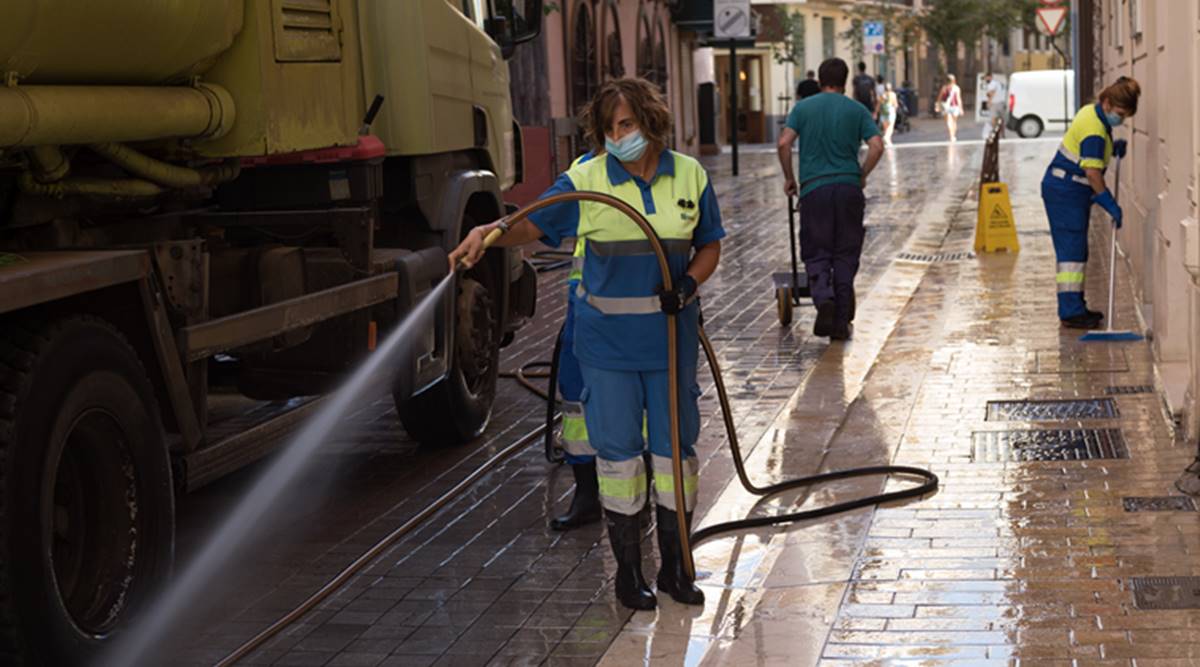 A street cleaner hoses down a sidewalk in Malaga, Spain, on Saturday, August 29, 2020. In the past week, Spain has recorded more new coronavirus infections per capita than anywhere else in Europe, and experts fear it is the beginning of a new phase of the pandemic. (Samuel Aranda/The New York Times)
A street cleaner hoses down a sidewalk in Malaga, Spain, on Saturday, August 29, 2020. In the past week, Spain has recorded more new coronavirus infections per capita than anywhere else in Europe, and experts fear it is the beginning of a new phase of the pandemic. (Samuel Aranda/The New York Times)Coronavirus Global Updates: Since the onset of the coronavirus pandemic almost 10 months ago, more than 25,485,328 people have tested positive for the deadly virus, while over 850,544 deaths have been recorded so far, according to data released by Johns Hopkins University. Around 16.8 million people have recovered from the illness worldwide.
A survey conducted by the World Health Organisation (WHO) has found that 90 per cent of 105 countries believe that the ongoing pandemic caused a disruption to health services. Low and middle-income countries were the worst affected, the survey showed.
The UN health agency has said that essential services like — immunisation, family planning services, and cancer and cardiovascular disease diagnosis and treatment — were the worst-affected, AP reported.
Here are some top global developments
Portugal’s COVID-19 cases raise UK quarantine fears
As coronavirus cases in Portugal go up and down, fears are growing that Britain will reimpose a quarantine for people travelling from the country. It has been less than two weeks since Britain, Portugal’s leading source of tourism, lifted a 14-day self-isolation rule for travellers arriving from Portugal. The announcement was a relief for the tourism sector, which struggled as restrictions kept visitors away over the summer.
The number of passengers arriving from Britain has grown by a whopping 190% since Portugal was removed from Britain’s quarantine list. But a steady count of several hundred new cases per day over the last week raised fears Britain would put Portugal back on the list.
Mexico’s factories still reeling from coronavirus, pace of decline eases in August
Mexico’s factories were still hurting in August from the coronavirus pandemic, with production falling and firms cutting workers, though the pace of deterioration in business conditions eased for a fourth straight month, a survey showed on Tuesday.
The IHS Markit Mexico Manufacturing Purchasing Managers’ Index stood at 41.3 in August compared with 40.4 in July, still far below the 50-threshold that marks the boundary between contraction and expansion. The index has been gradually recovering after plummeting to 35.0 in April, the lowest point in the survey’s nine-year history. “Although production continued to trend towards stabilization in August, the severity of this prolonged decline is a cause for concern, particularly as firms are still experiencing marked declines in new orders,” said IHS Markit economist Eliot Kerr.
The PMI data comes on the heels of the steepest quarterly decline in Mexican gross domestic product since the 1930s Great Depression, after the economy shrank 17.1% in seasonally adjusted terms in the April-June period from the prior quarter.
US manufacturing activity at 19-month high in August
US manufacturing activity accelerated to a more than 1-1/2-year high in August amid a surge in new orders, but employment continued to lag, supporting views that the labor market recovery was losing momentum.
The Institute for Supply Management (ISM) said on Tuesday its index of national factory activity increased to a reading of 56.0 last month from 54.2 in July. That was the highest level since January 2019 and marked three straight months of growth.
A reading above 50 indicates expansion in manufacturing, which accounts for 11 per cent of the US economy. Economists polled by Reuters had forecast the index would rise to 54.5 in August. But the continued improvement in manufacturing is uneven, as the COVID-19 pandemic shifts spending away from equipment used in the services industries such as restaurants and bars to purchases of goods like home electronics.
Global air passenger traffic falls by 79.8 per cent in July: IATA
Global air passenger traffic was 79.8 per cent less in July this year compared to the corresponding period a year ago, airlines body IATA said Tuesday, PTI reported. “This was somewhat better than the 86.6% year-over-year decline recorded in June, primarily driven by domestic markets, most notably Russia and China,” the International Air Transport Association (IATA) said in a statement.
Passenger traffic is measured in revenue passenger kilometers or RPKs, which is calculated by multiplying the number of passengers in a flight to the distance travelled by the flight.
“The crisis in demand continued with little respite in July. With essentially four in five air travelers staying home, the industry remains largely paralyzed,” said Alexandre de Juniac, IATA’s Director General and CEO.
Brazil economy back to 2009 size after record 9.7% slump in second quarter
Brazil’s economy shrank in the second quarter by the most on record as anti-coronavirus lockdown measures slammed activity in almost every sector, dragging Latin America’s largest economy back to the size it was in 2009.
The pandemic triggered a 9.7 per cent fall in gross domestic product from the prior quarter, government statistics agency IBGE said on Tuesday, and an 11.4 per cent decline compared with the same period last year. The magnitude of the slump in activity across the economy in the second quarter was huge: industry fell 12.3 per cent, services 9.7 per cent, fixed investment 15.4 per cent, household consumption 12.5 per cent and government spending 8.8 per cent.
UK to ramp up return-to-workplace campaign after COVID slump
Britain’s government will launch a media campaign this week to urge people to return to their workplaces, ramping up Prime Minister Boris Johnson’s calls to get the economy back up to speed after its hammering during the coronavirus lockdown.
Data has shown only 17% of workers in British cities had returned to their workplaces by early August, and one of the country’s business leaders said last week that big urban centres looked like ghost towns.
“The next stage we’ll look at is specifically the guidance on how to get back to work safely and we expect to see that later this week,” Johnson’s spokesman said, commenting on the government’s ongoing public information campaign. Johnson’s message is that returning to work will help stimulate the economy, the spokesman said.
AstraZeneca says potential vaccine entered phase III trials in the US
AstraZeneca has said a potential coronavirus vaccine has entered phase III trials in the US to test the effectiveness and safety of the product.
Cambridge England-based AstraZeneca said the trial will involve up to 30,000 adults from various racial, ethnic, and geographic groups across the US. The trial is funded by units of the National Institutes of Health and the Department of Health and Human Services.
AstraZeneca said development of the vaccine, known as AZD1222, is moving ahead globally with latestage trials in the UK, Brazil, and South Africa. Further trials are planned in Japan and Russia. The potential vaccine was invented by the University of Oxford and an associated company Vaccitech.
900,000 in Finland download virus tracing app
Finnish health authorities said Tuesday that some 900,000 people have downloaded a coronavirus tracing app a day after it was launched.
The Koronavilkku app is aimed at finding out whether a person has been exposed to the coronavirus, the Finnish Institute for Health and Welfare said, adding that the free-of-charge application was created to help break infection chains. App users send a randomly generated code via Bluetooth to others when in close contact.
“The Koronavilkku mobile app is part of the government’s test, trace, isolate and treat strategy,” said the health ministry’s permanent secretary, Kirsi Varhila.
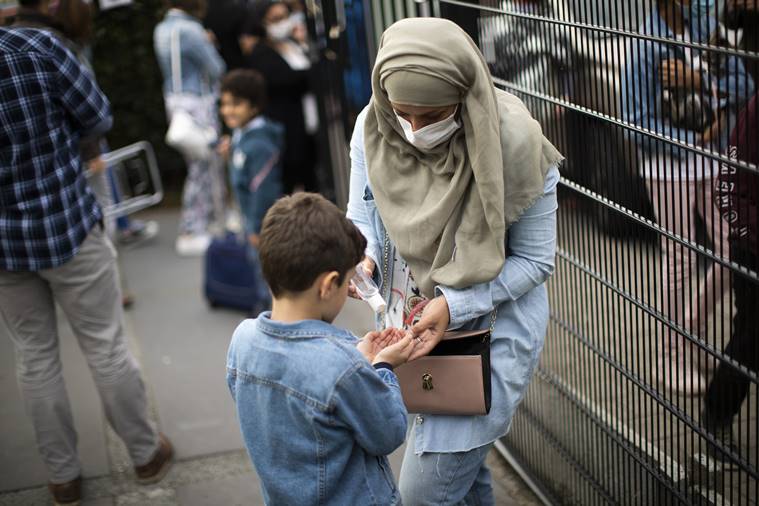 A child gets hand gel from her mother, wearing a face mask to fight against the spread of the coronavirus, before entering the Heembeek primary school during the first school day of the new season in Brussels, Tuesday, Sept. 1, 2020. From Belgium to Russia, France to Hungary, tens of millions of kids return to school on Tuesday. While it can be a joyous time for youngsters, many parents and teachers are more than uneasy how that will fuel the continent’s daily infection rates. (AP Photo/Francisco Seco)
A child gets hand gel from her mother, wearing a face mask to fight against the spread of the coronavirus, before entering the Heembeek primary school during the first school day of the new season in Brussels, Tuesday, Sept. 1, 2020. From Belgium to Russia, France to Hungary, tens of millions of kids return to school on Tuesday. While it can be a joyous time for youngsters, many parents and teachers are more than uneasy how that will fuel the continent’s daily infection rates. (AP Photo/Francisco Seco)
Singapore: 62,000 workers yet to be tested
A total of 62,000 workers in Singapore, mostly foreigners employed in labour-intensive industries, have yet to be scheduled for their mandatory rostered routine testing for COVID-19 ahead of the screening deadline on Saturday, authorities warned on Tuesday.
Those who fail to do so will not be able to return to work, the Ministry of Manpower (MOM), Building and Construction Authority (BCA), Economic Development Board (EDB) and Health Promotion Board (HPB) said in a joint press release.
Employers are reminded that these workers must have completed a swab test in the preceding 14 days and started their 14-day rostered routine testing cycle, reported Channel News Asia, citing the release.
Use pandemic to give the environment a vital rest, says Pope Francis
The COVID-19 pandemic has shown how the Earth can recover if we allow it to rest and must spur people to adopt simpler lifestyles to help a planet groaning under the constant demand for economic growth, Pope Francis said Tuesday
In his latest urgent appeal to help a fragile environment, Francis renewed his call for the cancellation of the debts of the most vulnerable countries. That action would be just, he said since rich countries have exploited poorer nations natural resources.
“In some ways, the current pandemic has led us to rediscover simpler and sustainable lifestyles,” Francis said in a written message
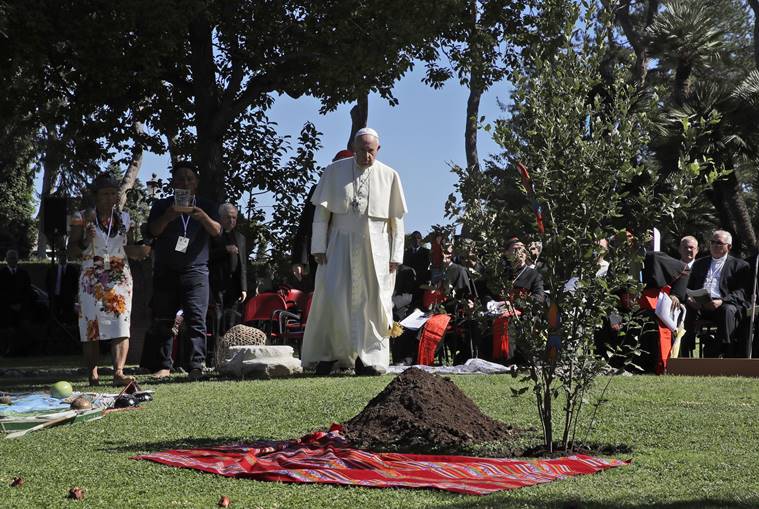 FILE – In this Oct. 4, 2019 file photo, Pope Francis walks towards a newly-planted oak tree during a tree-planting ceremony on the occasion of the feast of St. Francis of Assisi, the patron saint of ecology, at the Vatican. (AP Photo/Alessandra Tarantino, file)
FILE – In this Oct. 4, 2019 file photo, Pope Francis walks towards a newly-planted oak tree during a tree-planting ceremony on the occasion of the feast of St. Francis of Assisi, the patron saint of ecology, at the Vatican. (AP Photo/Alessandra Tarantino, file)
“Already we can see how the Earth can recover if we allow it to rest the air becomes cleaner. The water’s clearer and animals have returned to many places from where they had previously disappeared,” he wrote. “The pandemic has brought us to a crossroads.”
The pontiff urged people to seize the opportunity to examine habits of energy usage consumption transportation and diet.
Second virus wave grips Spain
Spain was already one of the hardest-hit countries in Europe, and now has about 440,000 cases and more than 29,000 deaths. But after one of the world’s most stringent lockdowns, which did check the virus’ spread, it then enjoyed one of the most rapid reopenings. Now, as other Europeans mull how to restart their economies while still protecting human life, the Spanish have become an early bellwether for how a second wave might happen, how hard it might hit, and how it could be contained.
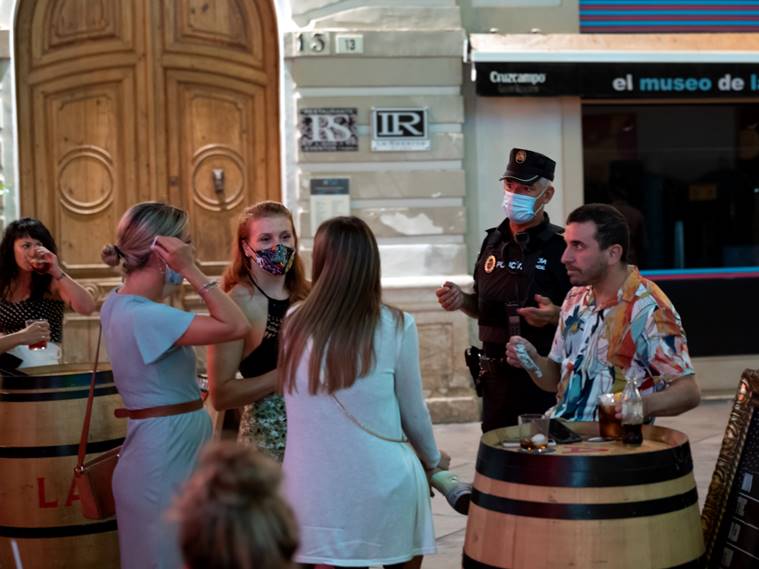 A police officer instructs people to put on their masks outside a bar in Malaga, Spain, on Sunday, Aug. 31, 2020. In the past week, Spain has recorded more new coronavirus infections per capita than anywhere else in Europe, and experts fear it is the beginning of a new phase of the pandemic. (Samuel Aranda/The New York Times)
A police officer instructs people to put on their masks outside a bar in Malaga, Spain, on Sunday, Aug. 31, 2020. In the past week, Spain has recorded more new coronavirus infections per capita than anywhere else in Europe, and experts fear it is the beginning of a new phase of the pandemic. (Samuel Aranda/The New York Times)
Explanations include a rise in large family gatherings; the return of tourism in cities like Málaga; the decision to return responsibility for combating the virus to regional authorities at the end of the nationwide lockdown, and a lack of adequate housing and health care for migrants.
The surge has also been blamed on the revival of nightlife, which was reinstated earlier and with looser restrictions than in many other parts of Europe.
Russia’s virus cases exceed 1 mn, globally fourth highest
Russia’s tally of confirmed coronavirus cases surpassed 1 million on Tuesday as authorities reported 4,729 new cases. With a total of 1,000,048 reported cases, Russia has the fourth largest caseload in the world after the US, Brazil, and India. Over 815,000 people have so far recovered, authorities said and more than 17,000 have died.
Experts say the true toll of the pandemic is much higher than all reported figures due to limited testing, missed mild cases, and concealment of cases by some governments among other factors.
As of Tuesday Russia has lifted most lockdown restrictions in the majority of the country’s regions.
10,000 tested in first 2 hours of Hong Kong’s universal testing
More than 10,000 people were tested within two hours of the launch of Hong Kong’s universal testing drive, China’s Global Times reported. Small queues began forming outside testing centres as soon as they opened early in the morning.
Hong Kong’s Chief Executive Carrie Lam was amongst the first few people to be tested, along with a number of other senior government officials.
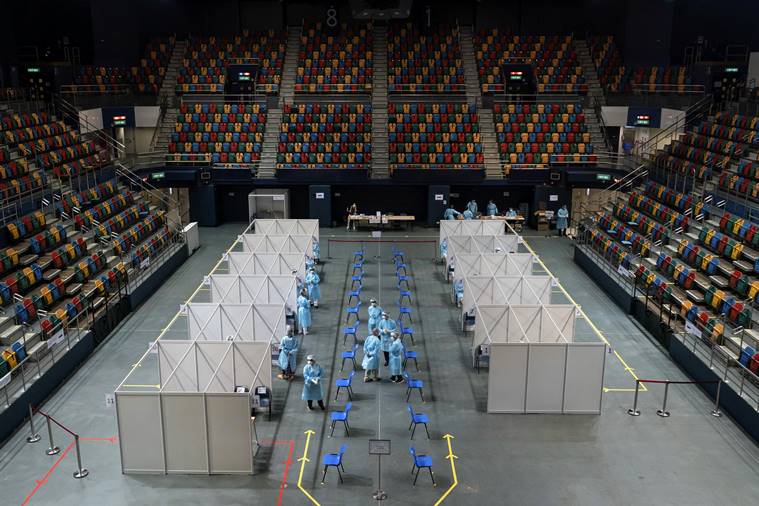 The makeshift testing site is seen at the Queen Elizabeth Stadium in Hong Kong Tuesday, Sept. 1, 2020. Hong Kong began a voluntary mass-testing program for coronavirus Tuesday as part of a strategy to break the chain of transmission in the city’s third outbreak of the disease. (Anthony Kwan /Pool Photo via AP)
The makeshift testing site is seen at the Queen Elizabeth Stadium in Hong Kong Tuesday, Sept. 1, 2020. Hong Kong began a voluntary mass-testing program for coronavirus Tuesday as part of a strategy to break the chain of transmission in the city’s third outbreak of the disease. (Anthony Kwan /Pool Photo via AP)
At least 593,000 residents of Hong Kong have signed up for the mass testing programme, according to the Global Times report. However, several groups, such as the HA Employees Alliance (HAEA), has called the scheme ineffective and have urged citizens to refrain from getting tested.
Many fear that residents will grow lax once they obtain negative test results, and the disease will spread further as people will stop strictly following prevention measures. Critics have also raised concerns about the scheme being misused for surveillance.
Chinese students begin full return to school
After no new cases of local transmission were reported in the last two weeks, Chinese students on Tuesday began returning to school for regular classes. While almost 75% students have returned to their classroom, the remaining children are set to rejoin school on Tuesday, AP reported.
Across different Chinese regions, social distancing norms and mask wearing has been enforced at varying degrees. However, local reports claim that all schools are conducting temperature checks of children before they enter.
On Tuesday, Chinese health officials announced that the country had reported 10 new cases of coronavirus, all of which were imported, AP reported. China has recorded 85,058 cases and 4,634 deaths since the first case of COVID-19 was reported in Wuhan, last year.
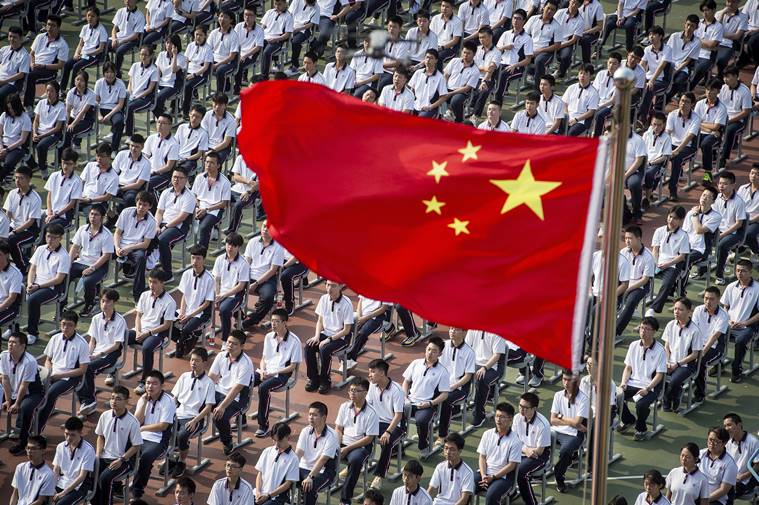 Students attend a ceremony to kick off the new semester in Wuhan High School in Wuhan in central China’s Hubei province Tuesday, Sept. 1, 2020. Chinese students began a full return to regular classes Tuesday following two weeks without new cases of local transmission in the country. (Chinatopix Via AP)
Students attend a ceremony to kick off the new semester in Wuhan High School in Wuhan in central China’s Hubei province Tuesday, Sept. 1, 2020. Chinese students began a full return to regular classes Tuesday following two weeks without new cases of local transmission in the country. (Chinatopix Via AP)
Hungary reopens borders to eastern neighbours
Just as a lockdown in Hungary’s borders took effect, the country announced that it will allow tourists from three of its East European neighbours — Poland, the Czech Republic and Slovakia — to enter, as long as they provide their negative COVID-19 test results, Reuters reported.
Last week, Hungary had announced that it would not allow any foreign travellers to enter the country due to a surge in coronavirus cases.
Hungarian Prime Minister Viktor Orban agreed to allow Czech visitors to enter the country after a discussion with Czech Prime Minister Andrej Babis on Monday. The relaxations were later extended to the other two neighbours, Reuters reported.
Tourists visiting Hungary will be required to provide a negative coronavirus test, that is not older than five days.
French drugmaker says its arthritis drug does not cure COVID-19
French drugmaker Sanofi has announced that its rheumatoid arthritis drug Kevzara has been found not to work as a treatment for COVID-19. The drug was being tested on critically ill COVID-19 patients as part of a US study, Reuters reported.
In a statement, the company said that it did not anticipate any further testing of the drug on COVID patients.
“Although this trial did not yield the results we hoped for, we are proud of the work that was achieved by the team to further our understanding of the potential use of Kevzara for the treatment of COVID-19,” Sanofi’s Global Head of Research and Development John Reed said.
Number of daily cases, deaths drop in Victoria
The Australian state of Victoria has reported 70 new cases and five deaths since yesterday — its lowest number of cases and deaths in two weeks. All the patients who succumbed to the virus were elderly residents of old age homes, state health authorities said, Al Jazeera reported.
Encouraged by the drop in numbers, the state’s premier Daniel Andrews has announced that the government is now planning a gradual reopening of Victoria.
“Given the low number of cases in regional Victoria and the fact that our strategy there has been very successful… we can today announce that on Sunday we’ll speak about two road maps towards opening up, one for metropolitan Melbourne and a second road map that may have different common end parts for regional Victoria,” he told journalists, according to Australian broadcaster ABC.
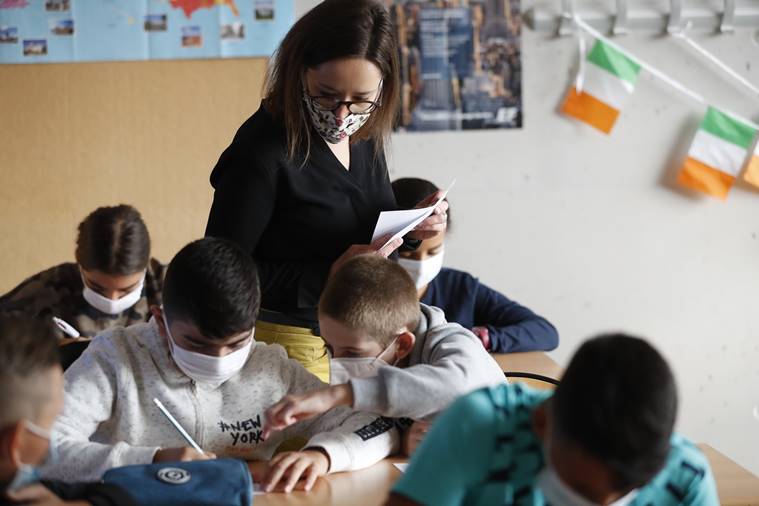 A teacher gives a lesson to masked school children in Bischheim, outside Strasbourg, eastern France, Tuesday, Sept.1, 2020. Millions of French children starting going back to class Tuesday despite a recent rise in virus infections, in a nationwide experiment aimed at bridging inequalities and reviving the economy. (AP Photo/Jean-Francois Badias)
A teacher gives a lesson to masked school children in Bischheim, outside Strasbourg, eastern France, Tuesday, Sept.1, 2020. Millions of French children starting going back to class Tuesday despite a recent rise in virus infections, in a nationwide experiment aimed at bridging inequalities and reviving the economy. (AP Photo/Jean-Francois Badias)
New face mask rules enforced in France
The French government has introduced a new set of rules for mask-wearing amongst office-goers in the country. According to a BBC report, the country published detailed criteria for when employees can remove their masks.
Different measures have been enforced in different parts of the country, with respect to mask wearing, depending on how widely the virus has spread in a particular region. In less-affected areas, masks can be removed if the office space has adequate ventilation and social distancing measures are in place.
In ‘red zones’, all employees are required to maintain a 4 sq m distance from the people around them to remove their mask.